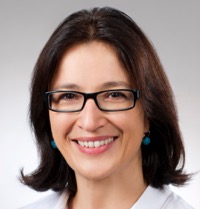
Lucia Poggi
 Professore associato
Professore associato
Dipartimento di Biologia Cellulare, Computazionale e Integrata - CIBIO
|
|
Formazione |
|
|
|
|
Carriera accademica ed attività didattica |
|
|
|
|
Interessi di ricerca |
|
|
|
|
Attività di ricerca |
|
Cell lineage-relationships and genetic signatures of retinal neurons with a common progenitor - implications for neuronal lineage reprogramming Research in the Poggi lab has resolved the indispensable prerequisites for targeted replacemente of retinal ganglion cells, the output neurons of the retina, which is to understand the genesis of these cells and the underlying genetics. For the first time, they reported the developmental relationship of ganglion cells and other retinal nerve cells as they arise from common progenitor cells (the stem cells of the embryonic retina) in the Journal of Neuroscience (Jusuf et al., 2012). To understand this they have applied a method called single cell 3D time-lapse microscopy (Poggi et al., 2005; Jusuf et al., 2013; Jusuf et al., 2013; Dudczig et al., 2017) and observed that a single progenitor cell divides asymmetrically to produce one ganglion cell and one other type of nerve cell named amacrine cell (Jusuf et al., 2012). The fact that they arise from the same type of progenitor cell (that is: they are lineally related) suggests that amacrines and ganglion cells share crucial proteins (Schuhmacher et al., 2011) and other features of nerve cells (neuronal plasticity, neurotransmitter identity etc.). Therefore, the manipulation of only a small number of factors might be sufficient to convert such lineally closely related cells into the respective other cell type. The Poggi lab is currently investigating on the genetic signatures that characterize specification and maintenance of lineally related amacrines and ganglion nerve cells in the embryonic and mature retina. Building on data from this study they aim to set out to designing effective strategies for in vivo reprogramming of amacrines and ganglion nerve cells, to be tested in both normal and pathologic conditions. Regulation of asymmetric self-renewal divisions in the generation of neuronal diversity during retina development In the developing central nervous system (CNS), multipotent progenitor cells undergo repeated asymmetric divisions, sequentially generating the different neurons in a precise order. Dysregulation of the fine tuning of self-renewal and differentiation can lead to a depletion or aberrant proliferation of neural stem and progenitor cells, with consequent dysregulation of neurogenesis. With their in vivo studies of the asymmetric self-renewing divisions of retinal progenitor cells, the Poggi lab highlighted the importance of Anillin, an F-actin binding protein and cytokinesis regulator, in maintaining daughter cell self-renewal and restricting retinal ganglion cell genesis, perhaps through furrow positioning, apical polarity proteins and midbody inheritance (Paolini et al., 2015; Cepero-Malo et al., 2017). |
|
|
|
Appartenenza a società e comitati scientifici |
|
|
|
|
Premi e riconoscimenti |
|
|
|
|
Convegni e conferenze |
|
• Selected talk - 64° Convegno GEI (11-14 June 2018, L’Aquila)
|


